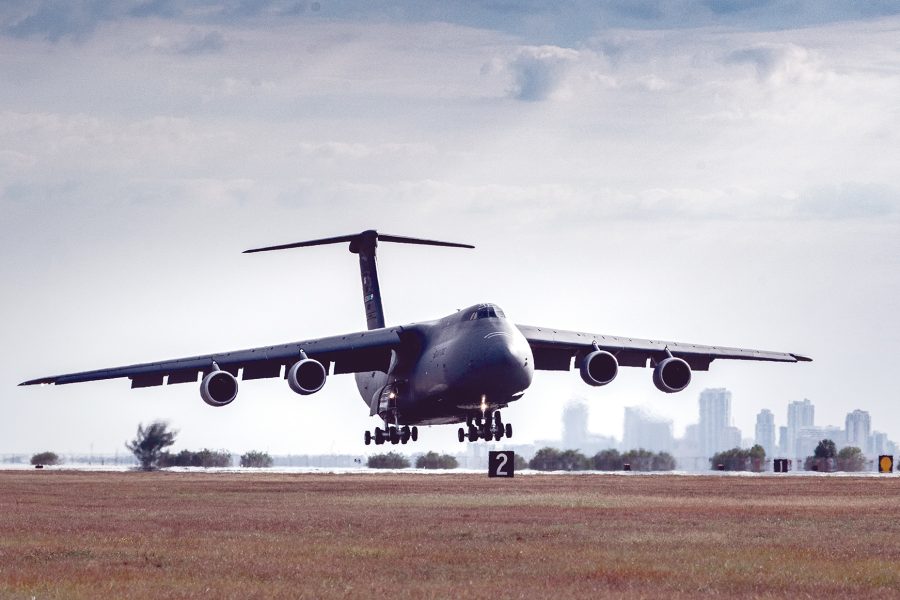A recent $10 billion fleetwide upgrade to the Air Force’s largest aircraft, the C-5M Galaxy, has not resulted in a higher mission capable rate—the huge airlifter was at 46 percent in 2023, down from 52 percent in 2022. Officials say the struggles are mostly due to a dried-up parts stream.
“We’re recovering from … budget decisions that were made on the C-5,” Kevin Stamey, program executive officer for mobility and training aircraft, told reporters at the recent Life Cycle Industry Days conference.
“When you cut the budget on a program, and you essentially advertise that, hey, we’re going to retire the system, unfortunately, the supply chain is challenged by getting restarted. I would say that is the singular greatest contributor to the hole we had to dig out [of].”
The C-5 fleet underwent a massive dual upgrade called the Avionics Modernization Program (AMP) and Reliability Enhancement and Re-engining Program (RERP), both of which were completed in 2018. The C-5’s problem-prone GE TF-39 engines were changed out for four GE CF6-80C2 turbofans, which in addition to being more reliable, added 22 percent more thrust, a one-third shorter takeoff roll and a 58 percent improvement in rate of climb. Avionics improvements included cockpit displays, communications, and navigation upgrades.
The upgrades, which collectively cost about $10 billion, were intended to keep the resulting 52 C-5Ms operating at about a 75 percent mission capable rate into the early 2040s. After some initial success in the late 2010s, the C-5’s readiness has continued to decline. The cavernous airlifter constitutes some 21 percent of the Air Force’s organic strategic lift capacity.
“We’re making great progress” with the C-5, Stamey asserted. Air Force Materiel Command has a program called “Drive to 55,” which is meant to get the type back above a 55 percent mission capable rate, and “we are getting really close to hitting that.”
“Kudos to our depot, DLA (Defense Logistics Agency) and program office teams to get us there,” Stamey said, though he did not say when he expected the 55 percent MC rate goal to be achieved.
An AFMC official later said that more funds are being applied to the C-5 Weapon System Sustainment, and that another depot line has been added to the C-5 depot at Robins Air Force Base, Ga. Metrics of how the changes have boosted C-5 reliability performance are not yet available.
Although the C-5 is slated to start retiring in 16 years, there is as yet no formal “C-X” replacement program contemplated for it. Air Force officials have recently said a follow-on mega-airlifter in the C-5’s class may not be in the cards, as Air Mobility Command is looking at low-observable capabilities that may dictate a smaller aircraft.
At Life Cycle Industry Days, officials also said there is currently no plan for a Service Life Extension Program for the C-17, the service’s other large airlifter.
“We are looking at the things that would be necessary to keep the C-17 out past 2050,” Stamey said. “But right now, it is just an analysis. There’s nothing on the books right now for a SLEP program, other than looking at the necessary things it would take to keep that aircraft” another 25 years.
The C-17 succeeded the C-141, which during its lifetime not only underwent a major life extension, but much of the fleet was actually stretched with a fuselage plug that added as much as 25 percent capacity to its lifting power.
The C-17 entered service in the 1990s, but in fiscal 2023 averaged a 77.5 percent mission capable rate. The average age of the 222-strong fleet is just over 20 years.


